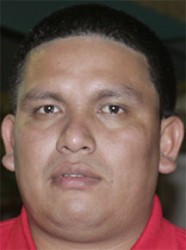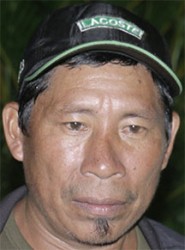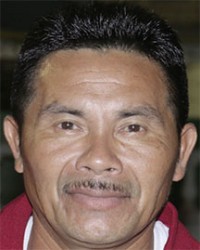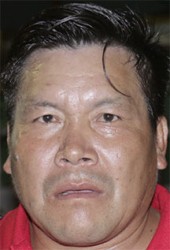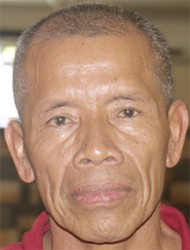During the recently concluded National Toshaos’ Council, we asked some of the village leaders to tell us about their villages. Their comments follow:
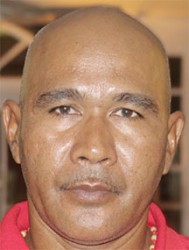
Bertie Xavier, Woweta Village, Region 9 – ‘The village comprises 345 residents. Forty-nine houses are powered by solar panels. The panels were funded by a Latin American group called OLADE. The project ended last year April. We usually depend on subsistence farming, and people
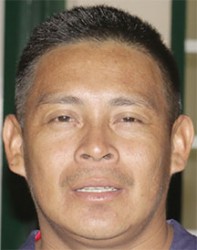
also engage in handicraft. Our produce is sold within the community because we don’t have a ready market. There are primary, nursery and secondary schools. Our community doesn’t really have any problems, only our own little internal problems. We’re working on developing the community, so we can have better education and health facilities. We hope to accomplish this by developing a tourism website that can promote the community.’
Joel Fredericks, Mainstay/ Whyaka Village, Region 2 – ‘The Toshao’s responsibility is to manage and govern the community. We have councillors for agriculture, sports, tourism and health. Mainstay Whyaka is a farming community that produces pineapple and other fruits. Members of the community also assist in promoting tourism at Lake Mainstay. Sports also plays a role in our community and we have an active sports club, called Mainstay Goldstar. Some of the sports we play are cricket and volleyball. Recently we travelled to Georgetown to represent Region Two at the Amerindian Heritage Sports Day Competi-tion. There’s also a health outpost that’s operated by a trained nurse. In terms of education there’s a primary and nursery school in the community. There’s no secondary school, that’s located in Anna Regina. One major concern of our community is the road, it is clay and when it rains, it would get very slushy and it is the main access road to the village and other communities. We are concerned about this because when the road gets really bad people don’t want to use it because they fear it can damage their vehicles.
David Garcia, Chenapau Village, Region 8 – ‘Chenapau has 132 people. We’re in a very remote area, only accessible by air. We don’t depend on rice and flour, we plant our own food and we don’t depend on Georgetown. We also mine gold and diamonds in the community. We sell our produce within the community. Indoor and aquatic sports are very popular, some of the games played in Chenapau are dominoes, cricket, football, swimming and local canoeing.
Road access is one of the most troubling things in the community. Transportation is very costly and if you can’t get a plane directly to Chenapau you have to come down a stream in order to reach Kaieteur and that’s $63,000 and then you have to pay an extra $27,000 to board the plane.
Another concern is proper water supply, right now it’s dry weather and the creeks and springs are dried up. We are using the big river right now, but I am concerned about the health effects it might cause.’
Kendell Francis, Pai-Pang Village, Region 9 – ‘Normally we do farming, mostly crops like cassava. We also rear livestock, like cattle. Poultry and sheep rearing are done on a small scale. We don’t sell the produce only consume it for our own purposes. Recently we started sports like football, cricket and volleyball, but there’s a lack of gears for sports in the community. There’s only one community health worker at the health outpost and it is very hard to go to the hospital, which is about 70 miles away. There’s no school in the community, the primary school is about six miles away, and it is very difficult
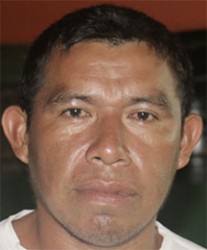
to travel through the rough terrain
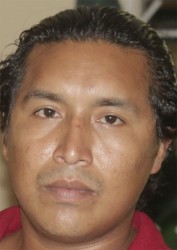
because the road is bad in the dry and rainy season. So schools need to be established in the community or the road should be fixed.
Tourism is also an interest to the community and more should be done to promote it.
Carlyon Francis, Kokshebai Village Region 9 – ‘My community is nice. It is located between Baboon and Creek Mountains, and we do farming, fishing and hunting. We don’t have any schools in the area or Health Centre, we have solar panels and we use spring water to drink and cook.’
Ricky Moses, Kwatamang Village, Region 9 – ‘People of my village are mostly dominated by the Macushi and Wapishiana tribes, we speak mainly Portuguese because we’re close to the border [with Brazil], and we do farming which is cassava, brickmaking, fishing and also cattle rearing. Persons in my community are very cooperative. Sometimes we are short on teachers but the education sector does well to provide persons to fill that gap same as health.
Eyon Boyal, Batavia Village, Region 7 – ‘We have approximately 460 residents in the community, Batavia is found in the lower Cuyuni River approximately 16 miles from Bartica. Our main economic activities are fishing, logging and farming.
Campbell James, Apoteri Village, Region 9 – ‘We have currently 298 persons in our village. We have had slight changes but for the better. We now have a village shop and a multi-purpose centre through the CDP [Community Development Plan]. Only one problem, we have only one trained teacher and three untrained teachers. We really need more trained persons. We have adequate drugs at the Health Centre but we need another health officer because our officer has gotten old and has become very ill apart from that. The conference today was fruitful because it has helped me to be aware of things I didn’t know. This conference has helped us a lot.’
Clyde Henry, Waramadong Village, Region 7 – ‘Sports is our thing and to prove that, this last Digicel Football Competition we reached the finals. It is our third time reaching the finals and losing, the disadvantage is the floodlights, we have acquired it but we’re still awaiting the cables to instal it. But I have a strong feeling that we’re going to win. Waramadong Village has 865 persons. We have engaged in building a multi-purpose building but right now it is being used as it is for church activities. We recently built a craft shop where we’re
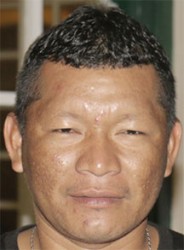
trying to promote traditional knowledge. In January we started a village shop through the presidential grant which has reached its objective. We are also planning to venture into farming through the CDP.
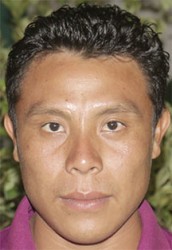
Derek Williams, Kamana Village, Region 8 – ‘First of all I must say that my village is small and it’s my second term as Toshao. There wasn’t much developments before but now it’s starting to pick up. The government has been good to us there, they built a community centre, village office and village shop. We are looking forward to having proper water facilities. During the last few days the water was dirty. Transportation is a problem in the village. I requested for the upgrading of the airstrip, we normally do maintenance to it without pay, but it definitely needs to be upgraded. We also do maintenance to our roads but we need heavy machinery to assist us, not shovel and spade.
Luke Simon, St Cuthbert’s Mission, Region 4 – ‘My community has 1,200 persons and approximately 250 households. It is demarcated and titled. In 2013, St Cuthbert’s Mission was granted its first logging concession under the present village council. There has been a lot of developments over the past two years. The village council has built a benab which is 60 feet in diameter and 50 feet in height. It is one of the largest in the country. It was built at a cost of $1.3 million. Four bridges have also been built, two by the Ministry of Agriculture and the other two by the Region 4 administration. We have completed our guesthouse which consists of 5 bedrooms with queen size beds, kitchen, dining area and four black tanks for water facilities. We have also managed to paint and fence the building. The landing has been enhanced to ensure that visitors and tourists visit on a regular basis. I have built a semi multi-purpose building which houses changing rooms and toilet facilities. A pavilion has also been built on the landing, a trestle and a black tank has been put there as well. The St Cuthbert’s village council is involved in a community development project which involves the construction of an eco-tourism lodge. This project is approximately 75% complete where $3.7 million have been exhausted, which was the first tranche. We are awaiting the second tranche which is $1.3 million. However, I have signed the agreement today [Oct 30] at the Conference Centre for the continuation of the project to be completed by December 31, 2014. I did a number of investments for the community, a 40 horsepower Yamaha outboard engine that would be used for reservation runs and transportation for tourists to and from the eco-tourism site. The engine was financed by the presidential grant where the cost of it was $775,000. We have also purchased a bobcat at the tune of $2.5 million which is also a presidential grant. A brush cutter was also purchased to maintain the landing road and the surrounding of the guesthouse and other areas. I would also like to say that the education level has been elevated to the highest standard.’
